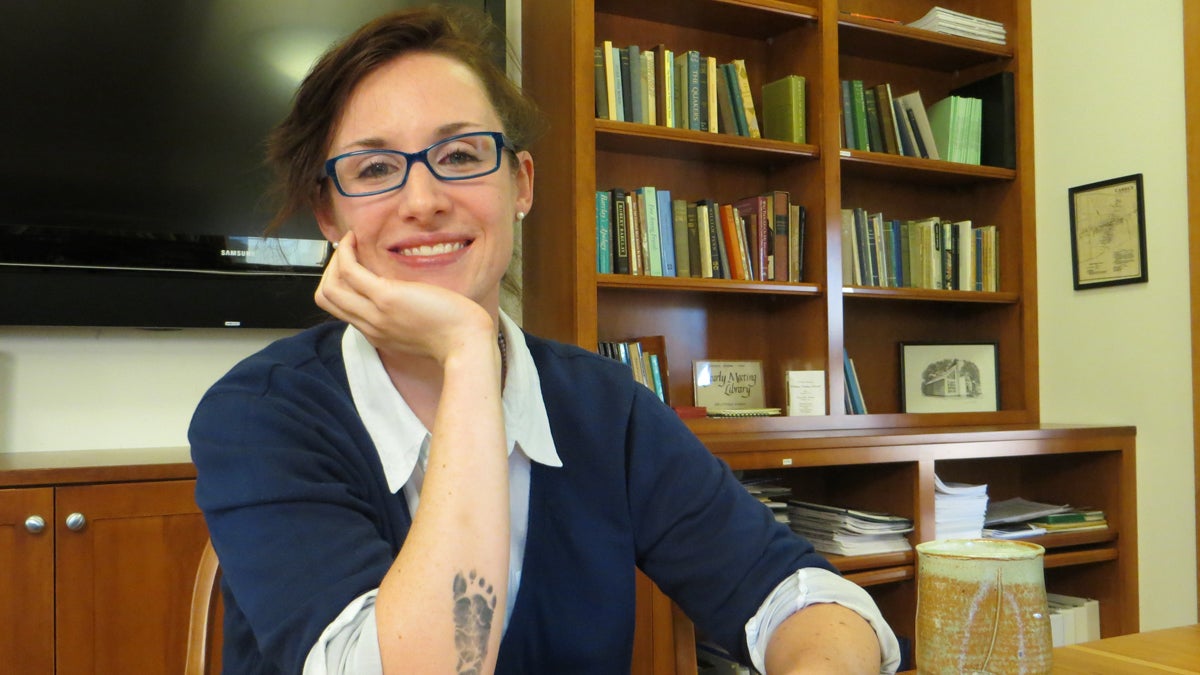Is home birth safe?
Listen
Doula Sarah Culver says the home is the safest place for healthy, low-risk pregnant women to give birth with a trained midwife, while others point to home-birth infant death rates that are three to 10 times higher than the rates for hospital birth. (Taunya English/for The Pulse)
Like many debates around medical research, there are conflicting conclusions about the same research and lots of skepticsm about the quality of evidence that each side offers up.
Also included in this series: Stepped upped sanctions for home birth in Delaware have expecting moms adjusting plans.
This probably won’t change your mind–one way or the other–about the safety of home birth.
Like many debates around medical research, there are conflicting conclusions about the same research and lots of skepticsm about the quality of evidence that each side offers up.
Obstetrician-gynecologist Amy Tuteur says home birth is a bad idea. In her blog The Skeptical OB, she points to studies that show rates of infant death and neurological damage three to 10 times higher for planned home birth compared to hospital birth.
“The issue is that women are not getting accurate information about the dangers of home birth,” Tuteur said. “I feel very confident that if women had accurate information, a lot of them would make different decisions.”
Home birth supporters counter that most babies are born healthy–that the overall infant death risk is low–and they says there’s an “irreducible risk” associated with birth–at home or the hospital. Other supporters, point to studies backing home birth.
Sarah Culver is a doula—someone who provides emotional support to women during labor and delivery.
“Scientific evidence and medical evidence suggest that for healthy and low-risk pregnant women, the safest place for them to have their baby is in a home environment with a trained midwife,” said Culver, a member of the Delaware Birth Network.
If you’re looking for guidance from one of the big physician groups, most take the stance that a hospital or birthing center is the safest place to deliver your baby—they also say a woman has the right to choose where she delivers.
That’s the opinion from a committee convened by the American Congress of Obstetricians and Gynecologists. The American Academy of Pediatrics concurs, and at the same time offers up recommendations for caring for infants born at home.
A case against home birth, not midwives
In October, authors of a study in the American Journal of Obstetrics and Gynecology said health providers have a “professional responsibility” to counsel families against home birth.
Study co-author Frank Chervenak is director of maternal-fetal medicine at Weill Cornell Medical Center. He and colleagues analyzed birth certificate data from the U.S. Centers for Disease Control and Prevention to compare the safety of planned home birth and hospital birth.
“We have movie stars who promote this,” Chervenak said. “To have glamorous fashion models describing the wonders of home birth, I believe this is very, very dangerous to women and the soon-to-be-born children.”
The advocacy of home birth “happens when ideology replaces professionally disciplined clinical judgment and policy,” the authors conclude.
Chervenak said his study argues that hospital birth is safer than home birth but takes no aim at midwives—or their ability versus other care providers.
Focusing on safety, or malpractice claims?
At a community meeting in Delaware this fall, certified nurse midwife Carrie Keane suggested that the debate about safety is a cover for worries over malpractice claims.
“This isn’t about saving babies,” Keane said. “This is about hierarchy and who’s going to pay the bill.”
When she’s attending a hospital birth at 3 a.m.—Keane told the crowd—and an emergency happens, she calls an anesthesiologist and other back-up physicians to help.
“They have 30 minutes to get to the hospital and I’m no safer at Beebe Hospital than I would be if I were at home,” Keane said.
At the same gathering, doula Sarah Culver shared statistics on what she calls “the shameful state of maternity care in the United States.”
“Less than one percent of those babies are born at home,” Culver said. “I think we can stop pretending that hospitals are where it’s safe.”
A report from Amnesty International called “Deadly Delivery: The Maternal Health Care Crisis in the USA” details some the underwhelming stats.
“You are never going to find a good midwife who says OBs are not necessary,” Culver said. “We need obstetricians, we need neonatologists, skilled pediatricians, these people are necessary, but the fact is they aren’t necessary nearly as often as they are used.”
According to the Centers for Disease Control and Prevention, women age 35 and older who’ve already had one child are more likely to choose home birth. The agency reports that the recent uptick in home birth has been greatest among non-Hispanic white women.
“Home births are less common among women of other racial or ethnic groups,” the CDC says.
Different types of data
In the battle over statistics, OB Amy Tuteur said it’s important to distinguish between the data on infant death rates and perinatal death rates. She argues that one is a yardstick of pediatric care, the other a gauge of obstetric care.
The risk of death for an uncomplicated pregnancy is low, Tuteur says, but she credits modern obstetrics for making it as safe as it is.
“If you give birth far from the interventions and personnel associated with modern obstetrics you can dramatically increase the risk of perinatal death,” Tuteur said.
WHYY is your source for fact-based, in-depth journalism and information. As a nonprofit organization, we rely on financial support from readers like you. Please give today.

